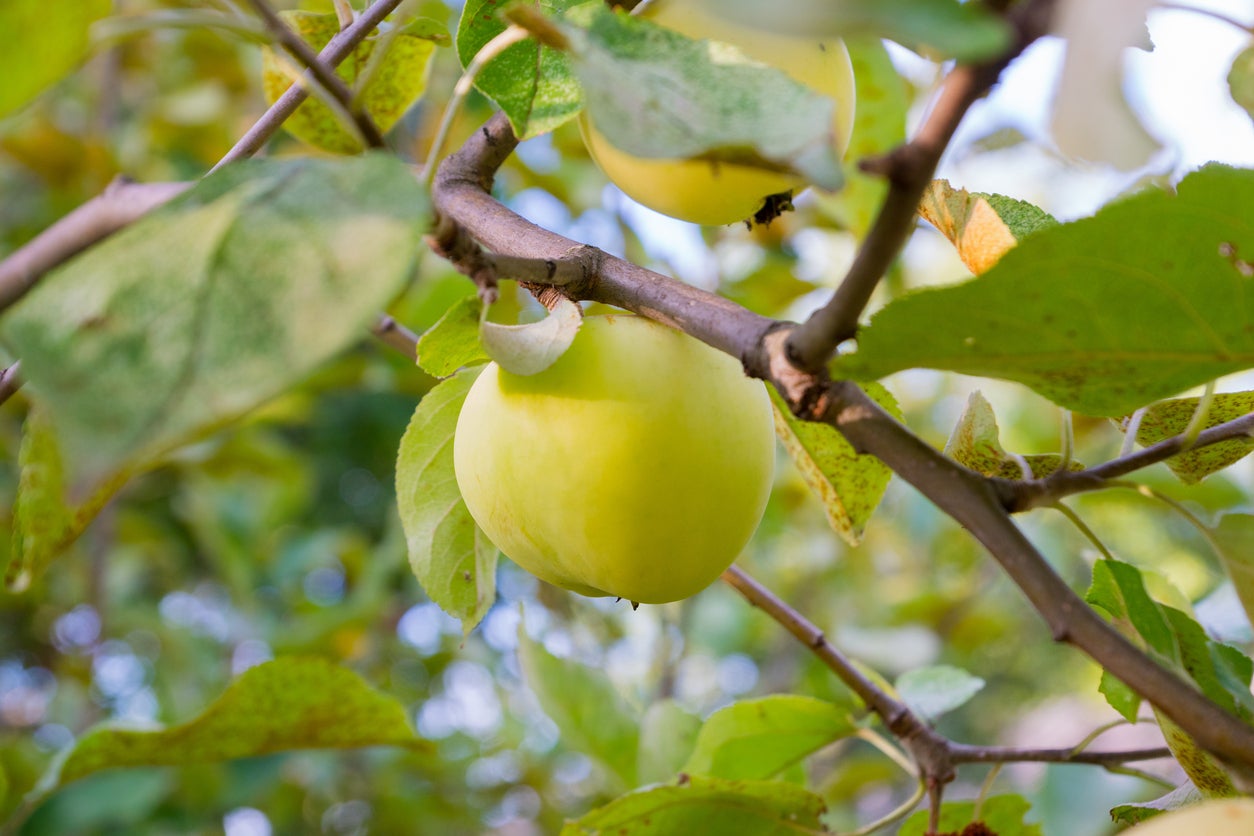Earligold Information – What Is An Earligold Apple Tree

If you just can’t wait for the late apple harvest, try growing early season apples such as Earigold apple trees. What is an Earigold apple? The following article discusses growing an Earigold apple and other pertinent Earigold information.
What is an Earligold Apple?
Earligold apple trees, as their name suggests, are early season apples that ripen in July. They bear medium-sized fruit that is light yellow in color with a sweet-tart flavor perfect for applesauce and dried apples. Earligold apples are a chance seedling discovered in Selah, Washington that is suited to USDA zones 5-8. It is classified as an Orange-Pippin. They prefer a sunny location in sandy loam to clay loam with a pH of 5.5-7.5. The tree attains a height of 10-30 feet (3-9 m.). Earigold blooms in mid-spring to late spring with a profusion of light pink to white blossoms. This apple tree is self-fertile and does not require another tree to pollinate.
Growing an Earligold Apple
Select an area of full sun with at least 6 hours of direct sun per day. Dig a hole in the soil that is 3-4 times the diameter of the rootball and the same depth. Loosen the soil walls of the hole with a pitchfork or shovel. Then loosen the roots up gently without breaking up the rootball too much. Place the tree in the hole with its best side facing forward. Fill the hole in with soil, tamping down to remove any air pockets. If amending the soil, never add more than half. That is, one part amendment to one part soil. Water the tree in well. Add a 3-inch (7.5 cm.) layer of mulch, such as compost or bark, around the tree to help retain water and retard weeds. Be sure to keep the mulch a few inches (7.5 to 10 cm.) away from the trunk of the tree.
Earligold Apple Care
At planting, prune out any diseased or damaged limbs. Train the tree while it is still young; that means training the central leader. Prune the scaffold branches to complement the tree’s shape. Pruning apple trees helps prevent breakage from overloaded branches as well as facilitates harvest. Prune the tree each year. Thin the tree after the first natural fruit drop. This will foster larger remaining fruit and reduce insect infestation and diseases. Fertilize the tree with a nitrogen fertilizer three times each year. New trees should be fertilized one month after planting with a cup or nitrogen rich fertilizer. Feed the tree again in spring. In the second year of the tree’s life, fertilize in early spring and then again late spring to early summer with 2 cups (680 g.) of nitrogen rich fertilizer. Mature trees should be fertilized at bud break and again in late spring/early summer with 1 pound (just under ½ kg) per inch (2.5 cm.) of trunk. Water the tree at least two times per week during hot, dry periods. Water deeply, several inches (10 cm.) down into the soil. Do not overwater, as saturation can kill the apple trees roots. Mulch will help to retain moisture around the tree roots as well.
Sign up for the Gardening Know How newsletter today and receive a free copy of our e-book "How to Grow Delicious Tomatoes".

Amy Grant has been gardening for 30 years and writing for 15. A professional chef and caterer, Amy's area of expertise is culinary gardening.
